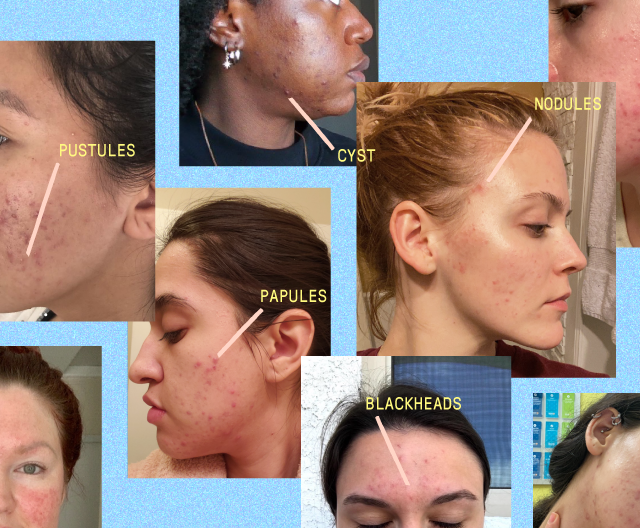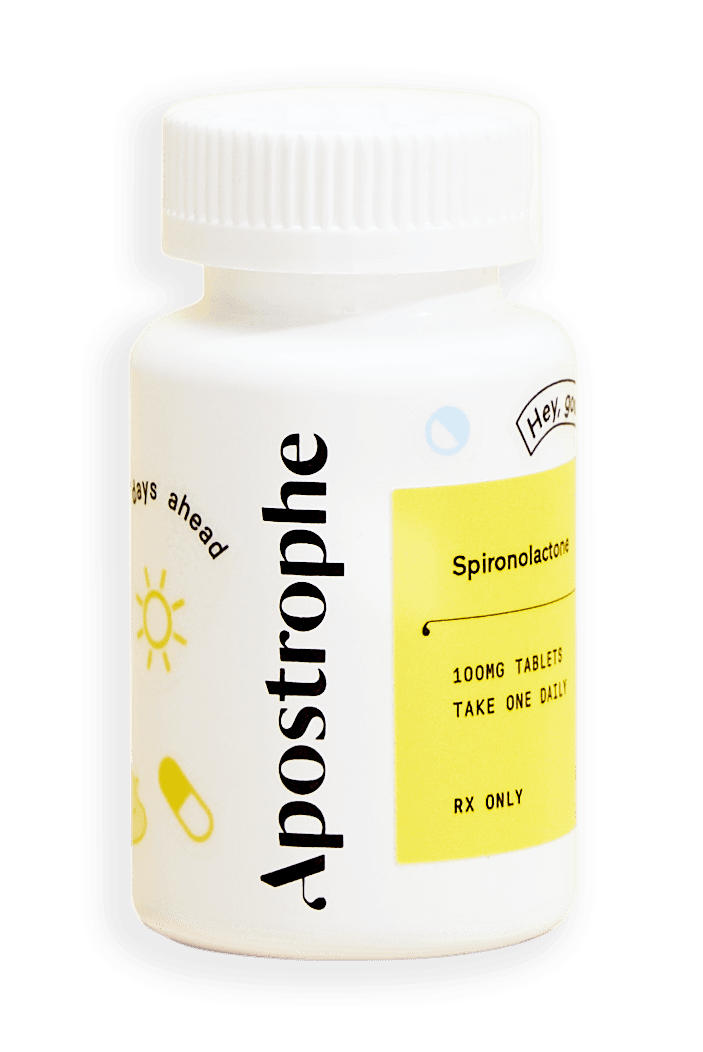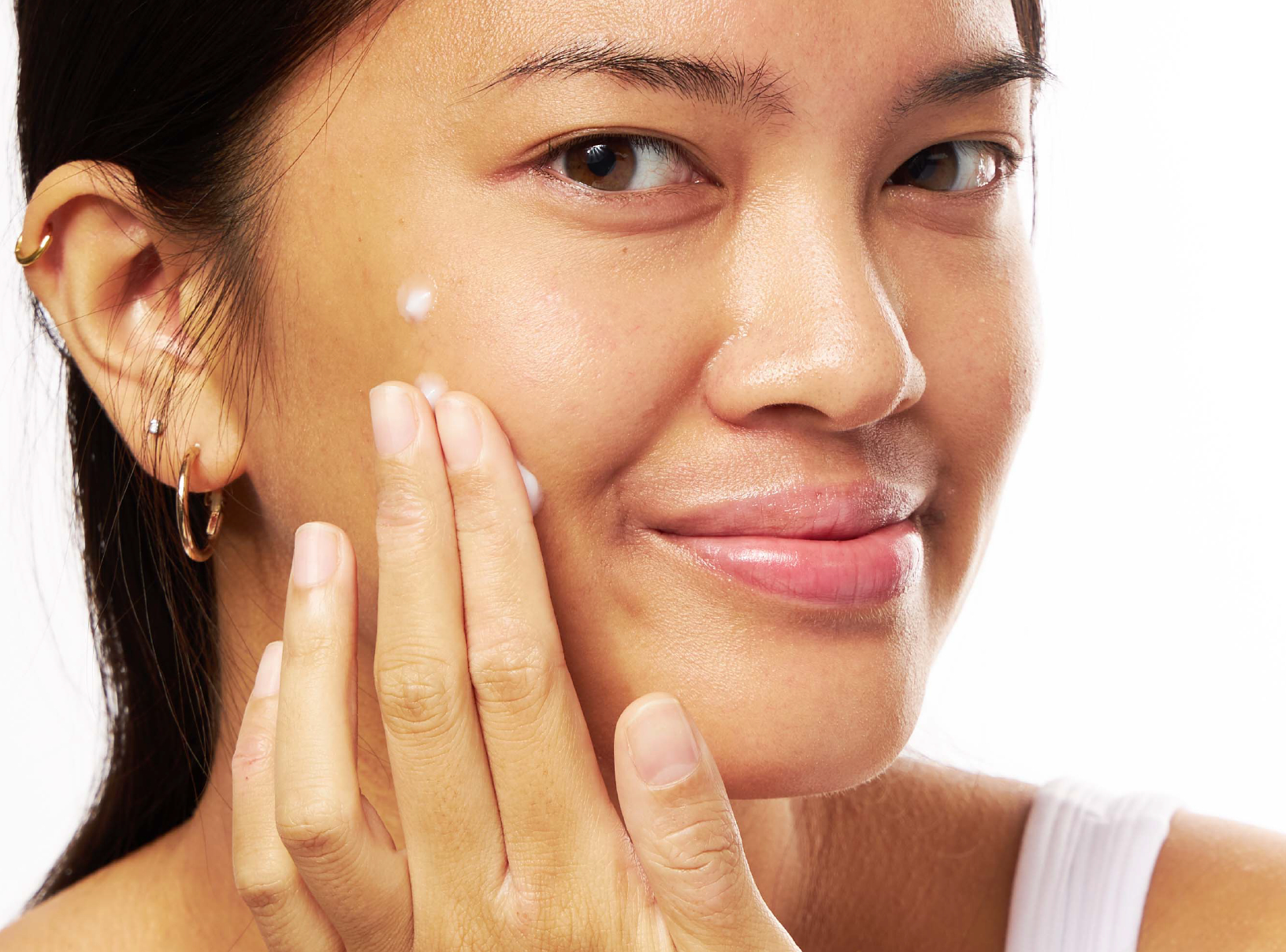Education
The Six Main Types of Acne


SHARE
Education
The Six Main Types of Acne
Medically reviewed by Aimee Paik, MD
Written by Annie Lam
Last updated 11/1/2024
If you've wondered how to know what type of acne you have, you've come to the right place. In most cases, acne vulgaris is caused by clogged pores, which can happen for a variety of different reasons (excess oil, dead skin cells, bacteria, hormones, and more).
It can be hard to differentiate between each type of acne lesion, so we’re breaking down how to determine what type of acne you have. From blackheads to inflammatory acne, here are the different types of acne and how to treat them.
What are the different types of acne?
There are six main types of acne: whiteheads, blackheads, papules, pustules, nodules, and cysts. Whiteheads and blackheads and non-inflammatory clogged pores, papules and pustules are inflammatory acne, and nodules and cysts are the most severe acne. Many people experience several kinds of acne, so here's how to tell the difference between them:
Whitehead
Whiteheads, also known as closed comedones, are clogged pores that appear as small skin-colored, firm bumps on the skin. These tend to form when excess oil/sebum and dead skin cells clog your sebaceous gland.
Whiteheads are a type of non inflammatory acne that is best treated with exfoliating acids like salicylic acid, benzoyl peroxide, or a topical retinoid like tretinoin. We know these can be tempting to pop, but popping pimples can actually worsen your breakouts. Try putting a hydrocolloid patch on to provide a protective barrier!
Blackhead
Blackheads, also known as open comedones, are clogged pores that are small, firm bumps that appear dark or black on the surface of the skin. These clogged pores turn dark or black because the excess oil and dead skin cells oxidize when exposed to oxygen.
While some people believe blackheads are common on the nose, normal pores on the T-zone (AKA sebaceous filaments) can also look black because of oxidized sebum. We know it can be frustrating, but these structures are an important part of normal skin! Pore strips were previously a common treatment for stubborn blackheads, but these can be very harsh on the skin. Salicylic acid, benzoyl peroxide, and retinoids are great alternative treatments to help treat and prevent blackheads.
Papule
A papule is a pimple that appears as a small red bump on the skin. These form when a clogged pore bursts and becomes inflamed. A bacteria called c.acnes also plays a role in stimulating inflammation. This form of acne is typically red and inflamed but does not contain pus.
Inflammatory lesions like papules are most commonly treated with topical or oral antibiotics, benzoyl peroxide, retinoids, and potentially spironolactone.
Pustule
Like papules, a pustule forms when a clogged pore bursts and becomes inflamed and filled with pus. This type of pimple appears as a red bump on the skin with a white “head”.
Pustules are best treated with topical or oral antibiotics, benzoyl peroxide, and retinoids to help calm inflammation in the skin. Picking or popping pustules can lead to increased breakouts and can easily cause a scar - so try to resist the urge to pop!
Nodule
Nodules appear on the skin as larger red skin bumps. This type of inflamed pimple tends to be very painful and form deep within the skin. Many dermatologists prescribe oral antibiotics for short periods to help calm down inflammation in the skin and jump start your treatment.
Topical treatments like retinoids are typically recommended alongside oral medications to keep acne under control long term. Oral spironolactone could also be a good long-term option for women with more severe acne or hormonal acne.
Cyst
Cysts are the most severe acne type. Cystic acne appears on the skin as large, red, and inflamed pimples greater than 1 cm in diameter that are deep-seated and filled with pus. A cystic pimple tends to be very painful and is the most difficult to treat.
Cystic acne is best treated under the care of a dermatology provider. They will be able to create the best treatment plan to help calm inflammation and treat severe acne over time. Usually, oral and topical treatments are both recommended to help treat cysts.
How to treat your acne
Acne vulgaris is complex and many people experience various kinds of acne. We know that having acne can be frustrating, but proper care and patience can help! If you have trouble figuring out how to identify the type of acne you have, getting expert treatment from a dermatology provider can help.
A dermatology provider will be able to provide the best medical advice for you and your unique skin. If you're looking to get expert treatment for your skin condition online, Apostrophe can help! Whether you have mild acne, moderate acne, or severe breakouts, you can get access to customized acne treatment through Apostrophe.
You can get started with your virtual consultation for just $20! All you have to do is fill out a medical assessment and take a few photos of your skin. From there, a dermatology provider will review your consultation and craft an acne treatment plan made just for you. Through Apostrophe, we provide access to ongoing support and professional treatment for your acne - no matter which types you're dealing with. We're excited for you to get started on your journey to healthy skin!
Shop this post

Tretinoin

Oral Spironolactone
Like what you just read? Sign up for our email list to get the scoop on skincare science delivered straight to your inbox.

Deep Dives
A dermatologist shares his thoughts on the recent studies about benzoyl peroxide and benzene.
Read More
Education
What is milia?
What is milia? Today, we’re jumping into one type of bump that you may have heard about most commonly in infants — milia.
Read More
Education
Best moisturizer for acne-prone skin
If you have combination acne-prone skin, figuring out which moisturizer is best for your skin might be tough. In this guide, we break down the best moisturizer for combination, acne-prone skin.
Read More
